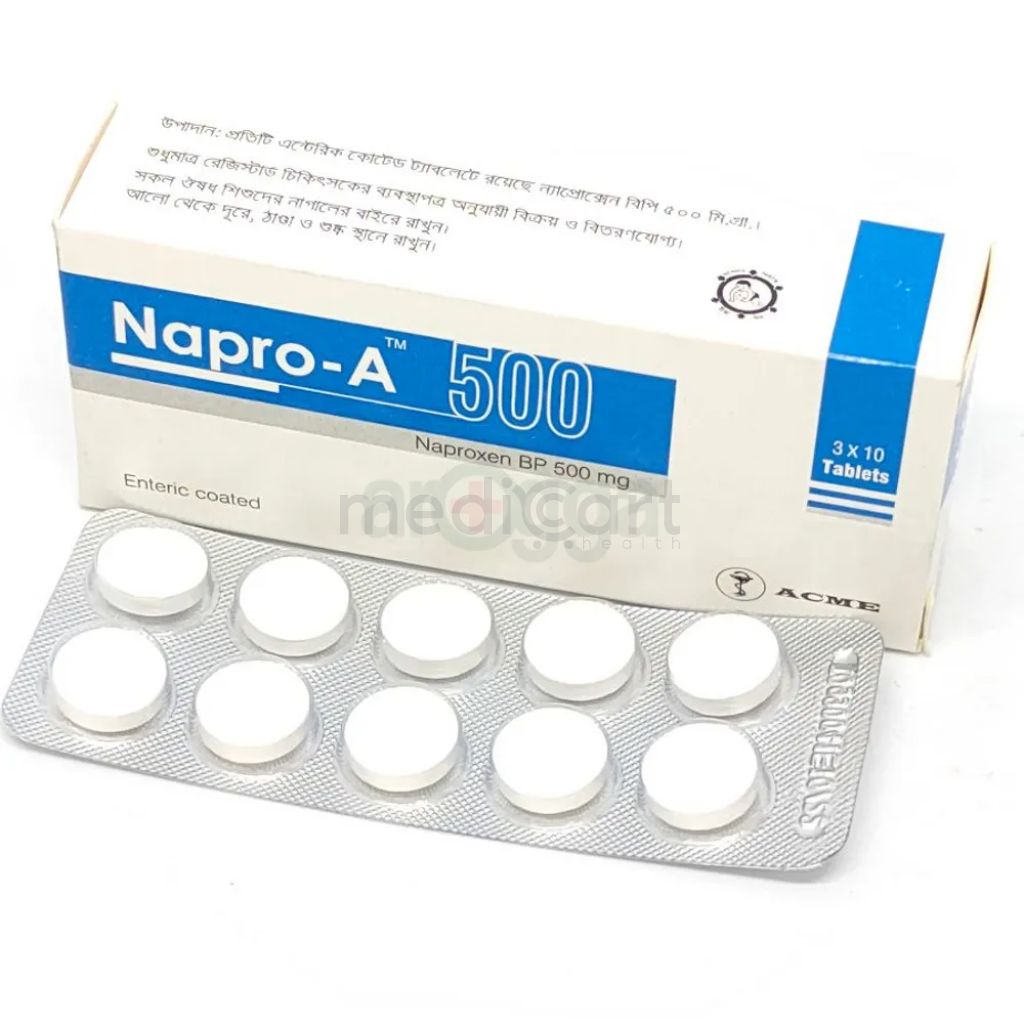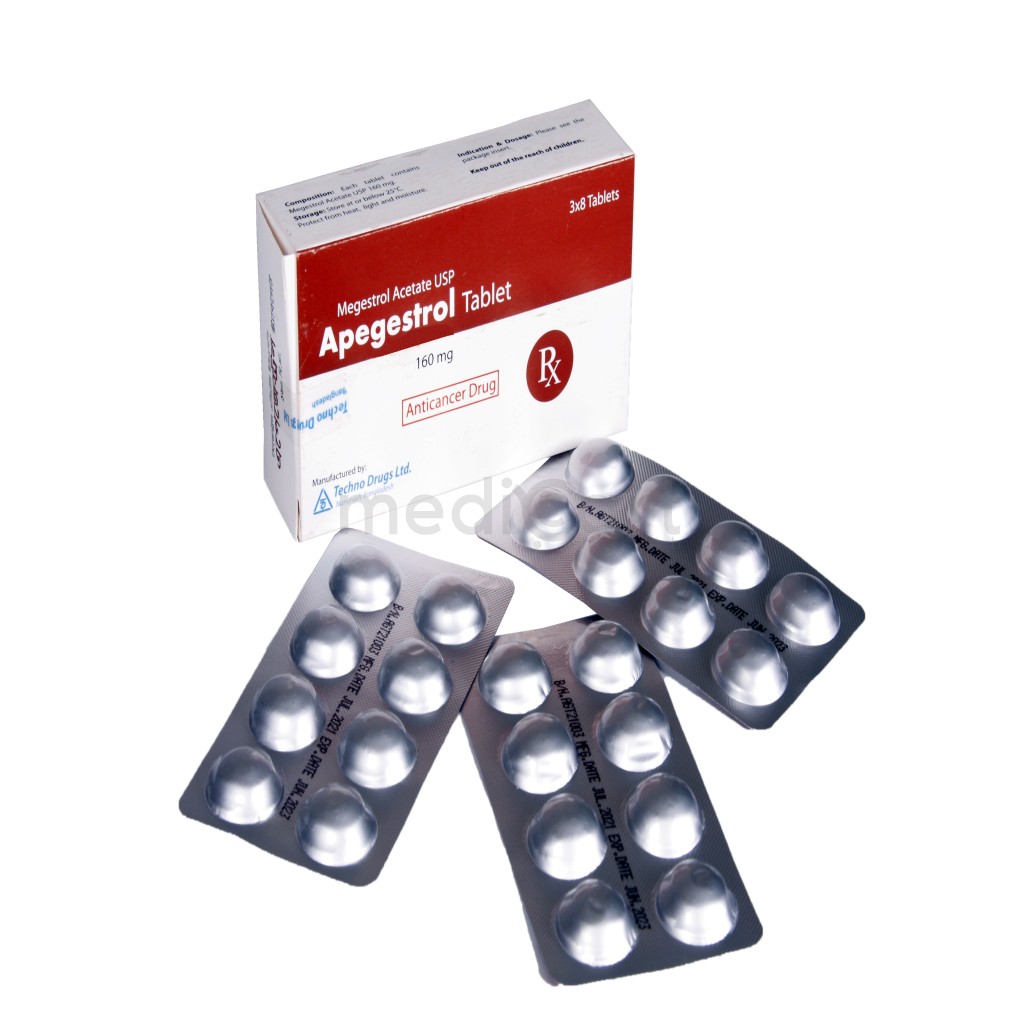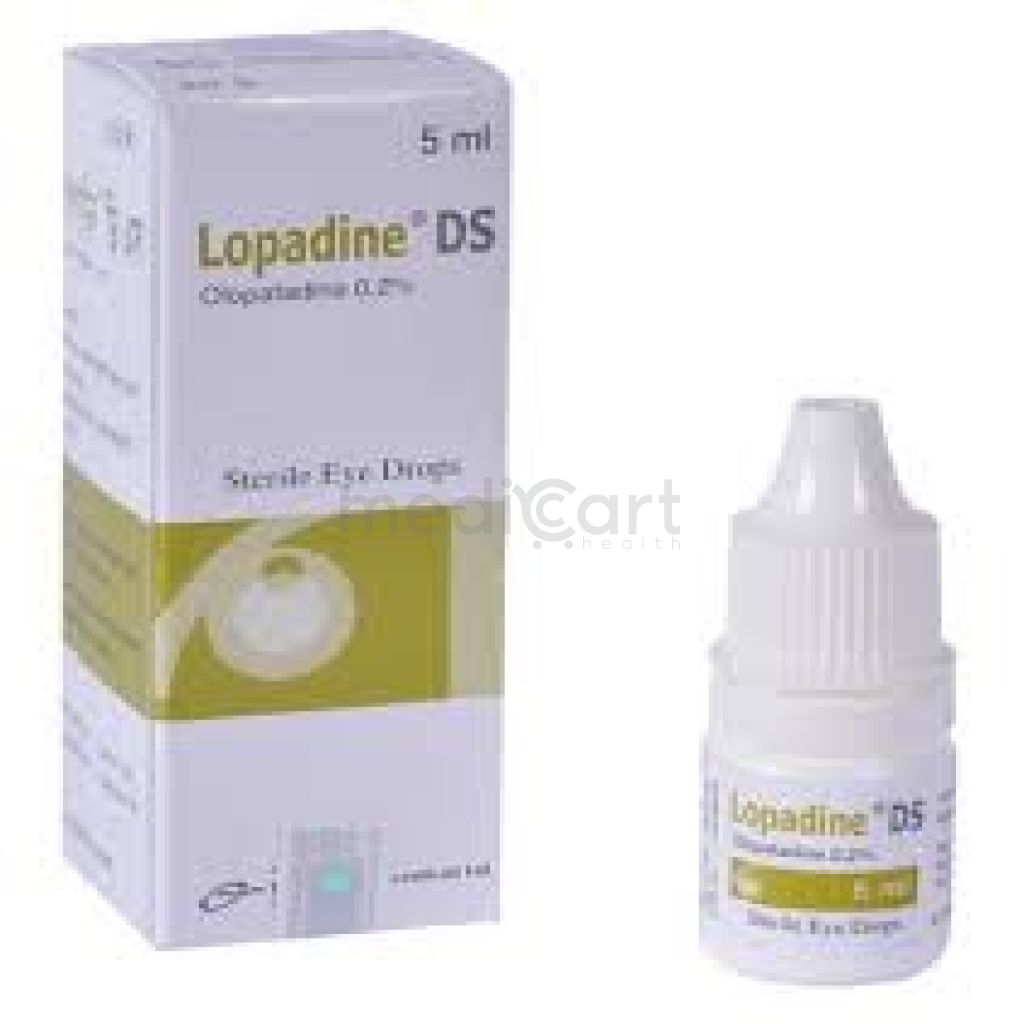

Best Price *
TK
40.00
* Delivery will be done in Dhaka city only.
More Information About - UNUSED PRODUCT 250mg
Description
Generic Name
NaproxenPrecaution
Patient w/ known CV disease or risk factors for CV disease, history of GI bleeding or peptic ulceration, fluid retention or heart failure. Hepatic and renal impairment. Elderly. Pregnancy and lactation. Patient Counselling May impair ability to drive and operate machinery. Monitoring Parameters BP should be monitored closely during initiation and throughout therapy. Perform periodically renal function, CBC and chemistry profile in patients receiving long-term therapy. Lactation: Drug excreted in breast milk; effect on infant unknown; not recommendedIndication
Rheumatoid arthritis, Ankylosing spondylitis, Post-operative pain, Dysmenorrhea, Acute gout, Acute migraine attacks, Renal colic, Mild to moderate pain, Tendonitis, Osteoarthritis (degenerative arthritis), Acute musculoskeletal disorders, BursitisContra Indication
Hypersensitivity. Aspirin or NSAID allergy. Perioperative pain in the setting of CABG surgery. Pregnancy (3rd trimester).Dose
N/ASide Effect
1-10% Abdominal pain (3-9%),Constipation (3-9%),Dizziness (3-9%),Drowsiness (3-9%),Headache (3-9%),Heartburn (3-9%),Nausea (3-9%),Edema (3-9%),GI bleeding (1-4%),GI perforation (1-4%),Lightneadedness (<3%),GI ulcers (1-4%),Fluid retention (3-9%),Diarrhea (1-3%),Stomatitis (<3%),Diverticulitis (1-3%),Dyspnea (3-9%),Hearing disturbances (<3%) <1% Meaningful (3 ? upper limit of normal) elevation of serum alanine aminotransferase or aspartate aminotransferasePregnancy Category
Name : Not Classified
Description
FDA has not yet classified the drug into a specified pregnancy category.Mode of Action
Naproxen, a propionic acid derivative, is a prototypical NSAID. It reversibly inhibits the cyclooxygenase-1 and -2 (COX-1 and -2) enzymes, thus resulting in reduced synthesis of prostaglandin precursors. It can inhibit platelet aggregation, has anti-inflammatory, analgesic and antipyretic actions.Interaction
May enhance methotrexate toxicity. Reduced BP response to ACE inhibitors or angiotensin II receptor antagonists. Increased risk of serious GI events (e.g. ulcer) w/ aspirin. Increased risk of GI bleeding w/ warfarin. May reduce the natriuretic effects of furosemide or thiazide diuretics. May increase serum lithium concentrations and reduce renal lithium clearance. Delayed absorption w/ antacids, colestyramine or sucralfate. May interfere w/ the antihypertensive effects of beta-blockers (e.g. propranolol). May increase serum levels w/ probenecid.Pregnancy Category Note
Pregnancy There are no adequate and well-controlled studies in pregnant women; data from observational studies regarding potential embryofetal risks of NSAID use in women in the first or second trimesters of pregnancy are inconclusive; NSAIDs inhibit prostaglandin synthesis, cause delayed parturition, and increase the incidence of stillbirth Lactation The naproxen anion has been found in the milk of lactating women at a concentration equivalent to approximately 1% of maximum naproxen concentration in plasma; developmental and health benefits of breastfeeding should be considered along with the mother?s clinical need for therapy and any potential adverse effects on breastfed infant from therapy or from underlying maternal conditionAdult Dose
Adults Oral: Pain 500 mg PO initially, then 250 mg PO q6-8hr or 500 mg PO q12hr PRN; not to exceed 1250 mg/day naproxen base on day 1; subsequent daily doses should not exceed 1000 mg naproxen base Extended release: 750-1000 mg PO qDay; may temporarily increase to 1500 mg/day if tolerated well and clinically indicated Rheumatoid Arthritis, Osteoarthritis, Ankylosing Spondylitis 500-1000 mg/day PO divided q12hr; may increase to 1500 mg/day if tolerated well for limited time Extended release: 750-1000 mg PO qDay; may temporarily increase to 1500 mg/day if tolerated well and clinically indicated Dysmenorrhea 500 mg PO initially, then 250 mg PO q6-8hr or 500 mg PO q12hr (long-acting formula); not to exceed 1250 mg/day on first day; subsequent doses should not exceed 1000 mg/day naproxen base Gout, Acute 750 mg PO initially, followed by 250 mg q8hr until attack subsides Extended release: 1000-1500 mg qDay, followed by 1000 mg qDay until attack subsidesChild Dose
Pain >12 years 500 mg PO initially, then 250 mg PO q6-8hr or 500 mg PO q12hr PRN; not to exceed 1250 mg/day naproxen base on day 1; subsequent daily doses should not exceed 1000 mg naproxen base Extended release: 750-1000 mg PO qDay; may temporarily increase to 1500 mg/day if tolerated well and clinically indicated Juvenile Idiopathic Arthritis >2 years: 10 mg/kg/day oral suspension PO divided q12hr; not to exceed 15 mg/kg/dayRenal Dose
Renal impairment: CrCl <30 mL/min: Use not recommended Severe: Contraindicated.Administration
Should be taken with food.Disclaimer
The information provided herein are for informational purposes only and not intended to be a substitute for professional medical advice, diagnosis, or treatment. Please note that this information should not be treated as a replacement for physical medical consultation or advice. Great effort has been placed to provide accurate and comprehensive data. However, Medicart along with its authors and editors make no representations or warranties and specifically disclaim all liability for any medical information provided on the site. The absence of any information and/or warning to any drug shall not be considered and assumed as an implied assurance of the Company.









